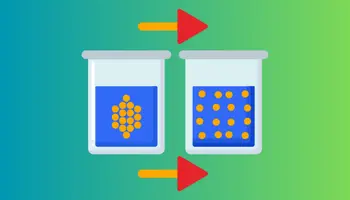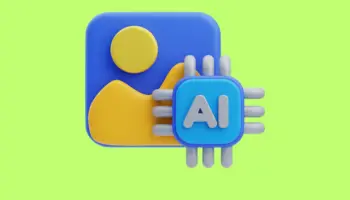What AI Image Gene...
GPT-Powered Math Calculator: Smart Solutions for Your Equations
Teaser
Perform complex math calculations with ease using [BEST_PROMPT]
Prompt Hint
- Complex numbers - Matrices and determinants - Calculus (differentiation and integration) - Graphing and plotting equations - Statistical analysis - Probability distributions - Financial functions (e.g. compound interest)
In today's fast-paced world, where efficiency is paramount, the integration of GPT (Generative Pre-trained Transformer) technology into math calculators has revolutionized the way we solve equations. This article explores the capabilities, features, and benefits of GPT-powered math calculators, providing insights into their applications across various fields and offering guidance on choosing the right one.
Understanding GPT-Powered Math Calculators
Explanation of GPT Technology
GPT technology, known for its natural language processing capabilities, has found a new home in math calculators. These calculators leverage pre-trained models to understand and interpret user input in a conversational manner, making them user-friendly and accessible to a broader audience.
Integration into Math Calculators
The seamless integration of GPT into math calculators enhances their problem-solving capabilities. Users can input complex equations using natural language, and the calculator interprets and generates accurate solutions, simplifying the entire process.
How GPT Enhances Problem-Solving Capabilities
The adaptive learning algorithms within GPT-powered calculators enable them to continuously improve their problem-solving skills. With each interaction, the calculator refines its understanding, providing users with increasingly accurate and efficient solutions.
Features of GPT-Powered Math Calculators
Natural Language Input
Gone are the days of inputting equations in a rigid format. GPT-powered calculators accept natural language input, allowing users to express mathematical problems in a way that feels intuitive and conversational.
Adaptive Learning Algorithms
The calculators' ability to learn and adapt to users' preferences ensures a personalized experience. As users engage with the calculator, it refines its algorithms to deliver solutions tailored to individual needs.
Real-Time Problem-Solving
The real-time problem-solving capabilities of GPT-powered calculators add a new dimension to mathematical exploration. Users can receive instant solutions, facilitating a dynamic and interactive learning experience.
Versatility in Mathematical Functions
From basic arithmetic to complex calculus, GPT-powered calculators exhibit versatility in handling a wide range of mathematical functions. This adaptability makes them invaluable tools for students and professionals alike.
Benefits for Students and Professionals
Improved Learning Experience
Students benefit from a more interactive and engaging learning experience. GPT-powered calculators simplify complex concepts, making math more accessible and enjoyable.
Time-Saving Advantages
Professionals working on time-sensitive projects appreciate the efficiency of GPT-powered calculators. Quick and accurate solutions enable them to focus on higher-level tasks without getting bogged down by manual calculations.
Enhanced Accuracy in Solutions
GPT's advanced algorithms contribute to enhanced accuracy in solutions. Users can trust the reliability of results, reducing the likelihood of errors in critical calculations.
Applications in Various Fields
Education Sector
In the education sector, GPT-powered calculators contribute to a paradigm shift in the way students approach mathematics. They foster a deeper understanding of concepts, encouraging independent problem-solving.
Scientific Research
Researchers benefit from the speed and accuracy of GPT-powered calculators in complex scientific calculations. These tools accelerate the research process, leading to quicker breakthroughs.
Professional Industries
Professionals in engineering, finance, and various industries find GPT-powered calculators indispensable for their work. The calculators streamline complex computations, improving overall productivity.
Overcoming Challenges
Addressing Potential Limitations
While GPT-powered calculators offer tremendous advantages, addressing potential limitations, such as occasional misinterpretations of input, is crucial. Continuous refinement of algorithms aims to minimize these challenges.
Continuous Improvements and Updates
Developers continually update GPT-powered calculators to stay ahead of evolving user needs and technological advancements. Regular updates ensure users benefit from the latest features and improvements.
How to Choose the Right GPT-Powered Math Calculator
Key Factors to Consider
Choosing the right GPT-powered calculator involves considering factors such as the level of mathematical complexity, user interface preferences, and integration capabilities with other tools.
Popular Options in the Market
Explore popular GPT-powered math calculators in the market, each catering to specific user needs. Compare features and reviews to find the one that aligns with your requirements.
User Testimonials
Experiences of Students and Professionals
Users across diverse fields share positive experiences with GPT-powered calculators. From simplifying homework assignments to expediting professional tasks, these testimonials highlight the impact of these smart solutions.
Positive Feedback on GPT-Powered Calculators
Users appreciate the user-friendly interface, quick response times, and the overall improvement in their mathematical proficiency.
Comparison with Traditional Calculators
Advantages of GPT-Powered Over Traditional
GPT-powered calculators outshine traditional counterparts in terms of adaptability, accuracy, and user engagement. The shift towards these advanced tools marks a significant step forward in mathematical technology.
Limitations of Traditional Calculators
Traditional calculators, while reliable, lack the intuitive nature and adaptive learning capabilities of GPT-powered counterparts. The limitations of traditional calculators become more apparent in complex problem-solving scenarios.
Tips for Optimizing GPT-Powered Math Calculator Usage
Effective Utilization Strategies
To make the most of GPT-powered calculators, users can employ effective strategies such as providing clear input, exploring advanced features, and incorporating these tools into daily learning or work routines.
Maximizing Benefits Through Proper Usage
Understanding the full range of features and functionalities ensures users maximize the benefits of GPT-powered calculators. Regularly updating knowledge on new capabilities contributes to ongoing optimization.
Security and Privacy Concerns
Addressing Potential Data Privacy Issues
As with any technology, GPT-powered calculators raise concerns about data privacy. Developers address these concerns by implementing robust security measures to safeguard user information.
Ensuring Secure Usage of GPT-Powered Calculators
Users can enhance security by using reputable GPT-powered calculators from trusted providers and staying informed about security best practices when utilizing these tools.
Case Studies
Successful Applications in Real-World Scenarios
Explore case studies showcasing the successful application of GPT-powered calculators in diverse real-world scenarios. From academia to industry, these examples illustrate the transformative impact of these tools.
Impact on Problem-Solving Efficiency
Case studies highlight how GPT-powered calculators contribute to improved problem-solving efficiency, ultimately leading to increased productivity and innovation.
The Future Landscape of GPT-Powered Math Calculators
Predictions for Technological Advancements
Anticipate future technological advancements in GPT-powered calculators, including enhanced language understanding, improved real-time processing, and broader applications in emerging fields.
Potential Breakthroughs in the Field
Stay tuned for potential breakthroughs in the field of GPT-powered math calculators, as researchers and developers continue to push the boundaries of what these tools can achieve.
Conclusion
In conclusion, GPT-powered math calculators represent a significant leap forward in the realm of mathematical technology. Their ability to provide smart solutions for equations, coupled with user-friendly interfaces and adaptive learning capabilities, makes them invaluable tools for students and professionals alike. Embracing these smart solutions opens new possibilities for efficient problem-solving and learning experiences.
FAQs
How do GPT-powered calculators handle complex mathematical problems? GPT-powered calculators leverage advanced algorithms to interpret and solve complex mathematical problems with a high degree of accuracy.
Are GPT-powered calculators suitable for professionals in specific industries? Yes, professionals in various industries, including engineering and finance, find GPT-powered calculators beneficial for streamlining calculations and improving productivity.
What security measures are in place to protect user data when using GPT-powered calculators? Developers implement robust security measures to safeguard user data, ensuring a secure and trustworthy experience when using GPT-powered calculators.
Can GPT-powered calculators be used by students of all levels? Absolutely. GPT-powered calculators are designed to cater to users of all levels, from students tackling basic arithmetic to professionals dealing with complex mathematical concepts.
How often should I update my knowledge on new features of GPT-powered calculators? Regularly staying informed about updates and new features ensures users make the most of GPT-powered calculators. Check for updates from the provider and explore new functionalities as they are released.
Prompt Example
Arithmetic Operations
Addition
To add two numbers, simply input the values as follows:
Calculate: [Number1] + [Number2]
Example: Calculate: 5 + 7
Subtraction
For subtraction, use the following format:
Calculate: [Number1] - [Number2]
Example: Calculate: 10 - 3
Multiplication
To multiply two numbers, use the asterisk (*) symbol:
Calculate: [Number1] * [Number2]
Example: Calculate: 4 * 6
Division
For division, use the forward slash (/):
Calculate: [Number1] / [Number2]
Example: Calculate: 20 / 5
Algebraic Equations
Linear Equation
To solve a linear equation, use the following format:
Solve: ax + b = 0
Example: Solve: 2x + 3 = 0
Quadratic Equation
For a quadratic equation, input the coefficients:
Solve: ax^2 + bx + c = 0
Example: Solve: x^2 - 4x + 4 = 0
Geometry
Area of a Rectangle
To find the area of a rectangle, provide the length and width:
mathematica
Calculate Area: Rectangle with length [Length] and width [Width]
Example: Calculate Area: Rectangle with length 8 and width 5
Circumference of a Circle
For the circumference of a circle, input the radius:
vbnet
Calculate Circumference: Circle with radius [Radius]
Example: Calculate Circumference: Circle with radius 10
Trigonometry
Sine Function
To calculate the sine of an angle in degrees:
arduino
Calculate Sine: sin([Angle])
Example: Calculate Sine: sin(30)
Cosine Function
For the cosine of an angle in degrees:
arduino
Calculate Cosine: cos([Angle])
Example: Calculate Cosine: cos(45)
Tangent Function
To find the tangent of an angle in degrees:
arduino
Calculate Tangent: tan([Angle])
Example: Calculate Tangent: tan(60)Recent Prompts

What AI Image Generator Is E...
Last updated 1 month ago

How to Make an AI Image Gene...
Last updated 1 month ago

What is the Best Free AI Ima...
Last updated 1 month ago

How to Use the Bing AI Image...
Last updated 1 month ago
.webp)
Understanding the Evolution...
Last updated 1 month ago

Leveraging the Power of AI f...
Last updated 1 month ago

Level Up Your Bullet Journal...
Last updated 1 month ago

Design Inspiration: Eye-Catc...
Last updated 1 month ago

Unleash Your Inner Foodie: D...
Last updated 1 month ago

ASMR Prompts for Relaxation...
Last updated 1 month ago







